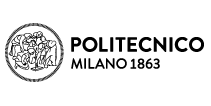Design for manufacturing
References have been taken from Hetero, a plastic injection system produced by NationalMolding, in order to study the manufacturability of the piece.
- Max size on the print bed 60x90 mm
- Minimum thickness of 0,6 mm (for Nylon)
- Average dimensional tolerance +/- 0,1 mm
- Maximum weight 14gr
The piece, whose dimensions are 72,55x25x25 mm for the support and 14,58x15x13,28 mm for the blocking cam, is therefore compatible with the specs of the machinery.
The material used to develop the components, based on Rold guidelines, is made of the following materials:
- Nylon 6/6 strengthened with 30% glass fiber for the support
- 50% PPA strengthened with 30% glass fiber and 50% Nylon 6/6 for the blocking cam
and is therefore compatible with the printing system. Furthermore it should be observed that the piece is actually produced with this system.
The analyzed machinery works with interchangeable multi-cavity plastic injection mold modules, which manage to simultaneously produce the two required pieces (which are very small and light).
Different kinds of processing techniques are allowed, like pass-through holes (for the hinging of the blocking cam) and walls with reduced thickness, in order to reduce as much as possible the amount of material required by the final product while still mantaining high robustness to the lock.
The system allows multi-cavity plastic injection moulding to produce multiple pieces at the same time, with the objective of reducing the costs while enhancing the sales volumes.
This implies an elaboration of the design of the piece, since the plastic flow entrances are subject to development (the total length of the canal has now increased) and the injection method (it is supposed that the flow will have to be at a higher temperature and at a higher pressure) to overcome the longer injection time of the flow inside of the mold.
The presence of multiple accesses for the plastic flow might be needed for every piece, given the reduced thickness of the designed components, in order to avoid weld lines.
Laboratorio Progettuale CAD - Academic year 2015-2016

